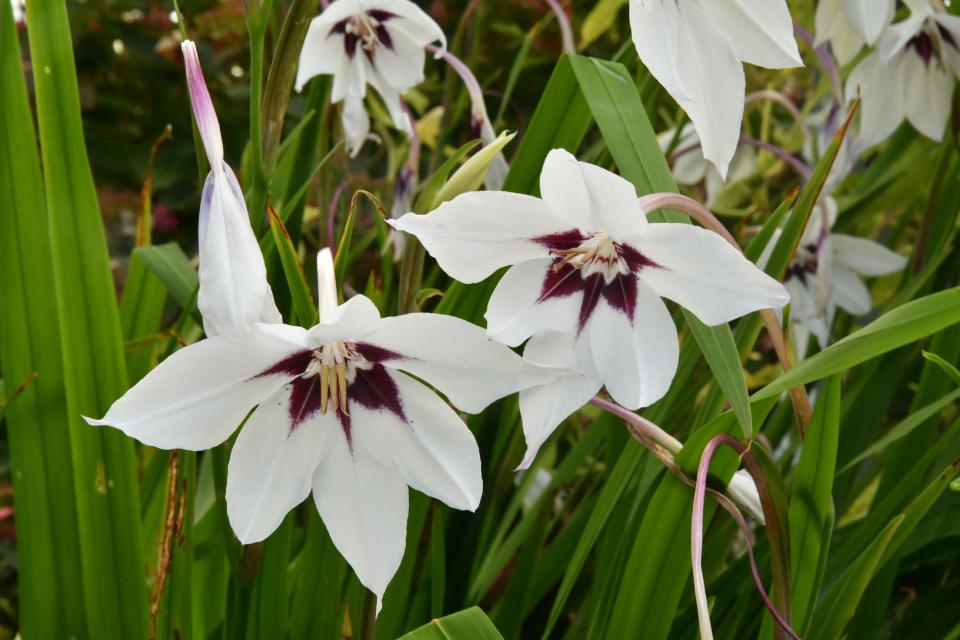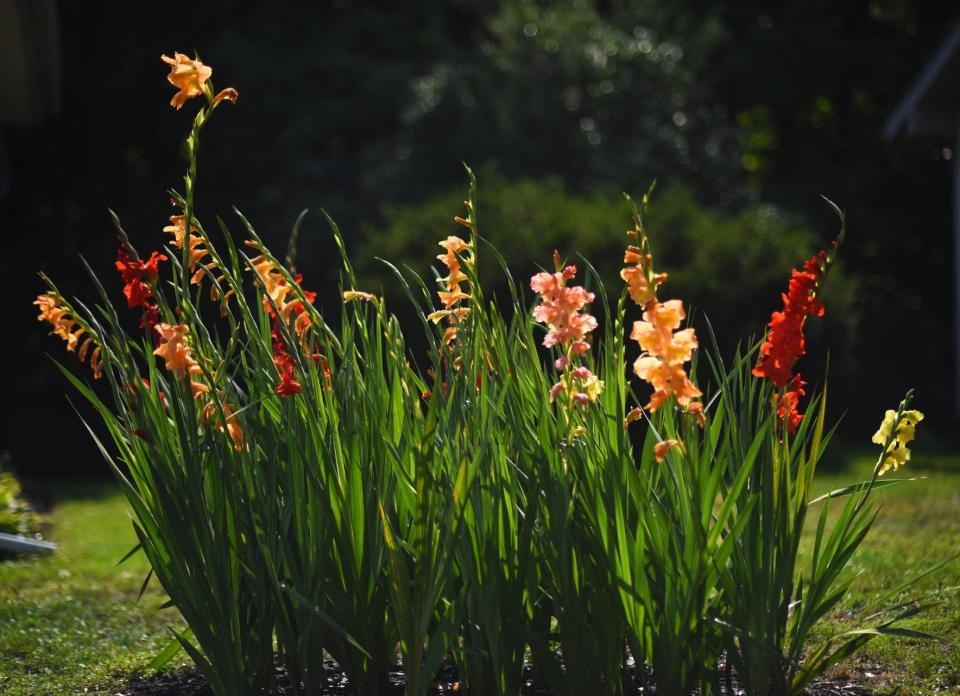Master Gardener: Gladiolus tapped at top 'bulb' crop for 2022

Gladiolus has been selected by the National Garden Bureau (NGB) as the bulb crop in its “Year of 2022” series even though it grows from corms and not bulbs.
Founded in 1920, NGB is the not-for-profit marketing arm of the gardening industry and educates, inspires, and motivates people to increase the use of plants in homes, gardens, and workplaces.
Each year, NGB’s horticultural experts choose one annual, one perennial, one bulb crop, one edible, and one shrub as the “Year of the” crops. These are selected for their popularity, ease in growing, genetic diversity, and versatility.

NGB selected these for the Year of 2022 plants: verbena (annual), phlox (perennial), gladiolus (bulb), salad greens (edible), and lilac (shrub).
Almost everyone is familiar with the summer-blooming gladiolus spikes which have graced gardens for generations. Originating in Africa and other arid climates in the Mediterranean area, today’s selections are far showier due to the efforts of plant breeders who started working with them in the 1800s.
About today’s gladiolus
Gladiolus comes in a variety of sizes and colors and can be grown throughout the United States. In Ohio, which is divided into three USDA planting subzones, 5a, 5b, and 6a, the corms do not overwinter and must be harvested in the fall and stored inside over winter.

The size classification is determined by the diameter of the floret, according to the North American Gladiolus Council (NAGC) which is the International Gladiolus Registry.
The smaller sizes, 100 and 200, are considered Miniatures with florets measuring under 2½ inches and 2½ but less than 3½ inches. Medium size, 300, measure 3½ but less than 4½ inches. Large size, 400, has florets measuring 4½ but less than 5½ inches; and Giant, 500, florets measure 5½ inches and larger.
The NAGC color classification range includes white, green, yellow, orange, pink, red, lavender, and tan/brown. Color is not limited to solid colors; there are so many bi-color and distinctly marked glads that appeal to everyone.
When and How to Plant Gladiolus Corms
Gladiolus should be grown in well-drained soil and full sun. They can be grown in a cutting garden, the perennial garden, raised beds or containers, or even in the vegetable garden.
Glads should be planted in early to mid-May after the last frost. Different varieties bloom from very early, about 70 days, to very late, about 100 days. For continual blooms throughout the summer, plant corms every few weeks.
The stem holds many buds which will continually bloom starting with the lower ones each day until reaching the tip. Remove spent blooms.
You can grow glads for your own pleasure, or you can enter competitions such as the county fair, or Northwestern Ohio Gladiolus Society's Lakeside Glad Show and the Ohio State Fair Glad Show. You can show spikes, which are the single stem, or designs which include table arrangements, wall pockets, vases and baskets.
Buy Gladiolus Corms at Upcoming Auctions
Gardeners can readily purchase mixed gladiolus corms from box stores but they have no guarantee about the resulting color. To get a specific color consider purchasing directly from cataloguers or participating in local glad corm auctions.
The Northwestern Ohio Gladiolus Society (NWOGS) will be hosting an online auction March 1 to March 5 and a seated auction at 1 p.m. March 12 at the Hancock County Agricultural Center, 6868 CR 140, Findlay. About 100 varieties will be offered at each auction.
For more information about the content of these auctions and to obtain a bidder number, email nwogladiolussociety@gmail.com.
Upcoming events
• The public is invited to a special presentation by Helen Hollis on March 23. She will be speaking on the declining chimney swift birds and how we can help build their population. This special presentation will be held in the large conference room at the Sandusky County extension building, 2000 Countryside Dr., from 6 to 8 p.m. For more information call Sue at the extension office at 419-334-6340 and leave a message.
• Toledo Grows will have their Seed Swap on Saturday at Scott High School, 2400 Collingwood Ave., Toledo, from noon till 3 p.m. Admission is free. You will receive 10 tickets for seed packets. You can buy additional packets for 50 cents each or bring your own seeds to swap. They must be dated 2022, packaged and labeled. No bulk seeds. There are children’s activities, gardening displays, and plenty of plant knowledge. Masks are required.
Christine Michael is a Master Gardener with the Sandusky County and Ottawa County Extension Offices.
This article originally appeared on Fremont News-Messenger: Gladiolus tapped at top 'bulb' crop for 2022

